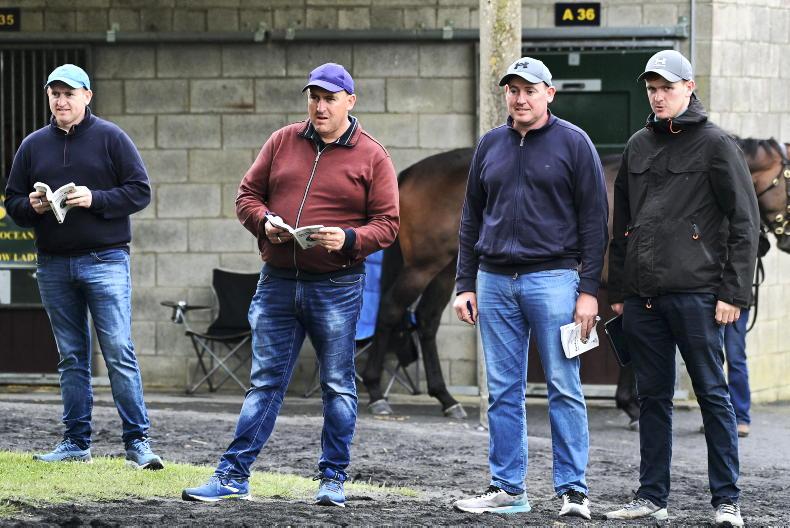ONE reason for apprehension ahead of the sales was the tough season suffered by point-to-point handlers due to record high rainfall over the winter and spring. The store sales have become quite dependent on that side of the market, and in spite of fears, it continued to be the case again this June.
Four of the top six buyers at this year’s Arkle Sale (Part 1) were shopping with that destination in mind, as were two of the top three buyers at the Derby Sale. Monbeg Stables were the leading buyer at both, spending a total of €2,001,000 on 45 horses (averaging €44,467) compared to their 2014 spend of €533,500 on 26 horses (average €20,519).

Reeling back the years
Some consignors rued the lack of trainers buying last month, and indeed in recent years, suggesting this was not the case ten years ago. They did acknowledge that trainers may be employing the services of bloodstock agents, but I took a look back at the 2014 sales to investigate further.
While a greater number of trainers featured on the Derby Sale buying bench in 2014, when I delved deeper, I found another influence. Mouse Morris spent €458,000 on seven horses, but every single one went on to carry the maroon silks of Gigginstown House Stud - the same applied to the majority of Dessie Hughes’ €325,000 spend at the same sale.
Kieran McManus was the leading buyer that year at €1,128,000, with J.P. McManus’ racing manager Frank Berry topping the table at Goffs at €847,000. Last month, Kieran McManus spent €393,000 at Goffs, while Berry and Michael Hyde spent €127,000 and €245,000 respectively at Tattersalls Ireland. That represents a 61% drop in the group’s spending over ten years, though it should be said that they didn’t appear in the top table in either 2013 or 2015. It goes to show that a lot can change in a year, never mind ten years.

Reasons for concern
I would imagine that the point-to-point handlers’ increasing power in the sales ring has made it more difficult for trainers to purchase stock, something they would not have had to contend with so much in the past. Trainers with high-spending owners can access the proven product for six-figure sums further down the line, but one has to sympathise with “the small man” at the store sales.
If trainers fail to secure the necessary raw materials year-after-year, they are likely to suffer on the race track, and their already fragile presence at the sales can become non-existent. This applies to flat sales too, where the polarised market also lacks strength in depth.
The National Hunt breeders, consignors and sales companies should be wary of a market dependent on those buying to resell, for that can never be guaranteed stable.
It is difficult to determine which buyers were missing, or whose spend was down, at the 2024 store sales, given that the point-to-point fraternity regularly team up on purchases, while others sign under pseudonyms. Owners and trainers’ use of bloodstock agents further adds to the sense of mystery.
